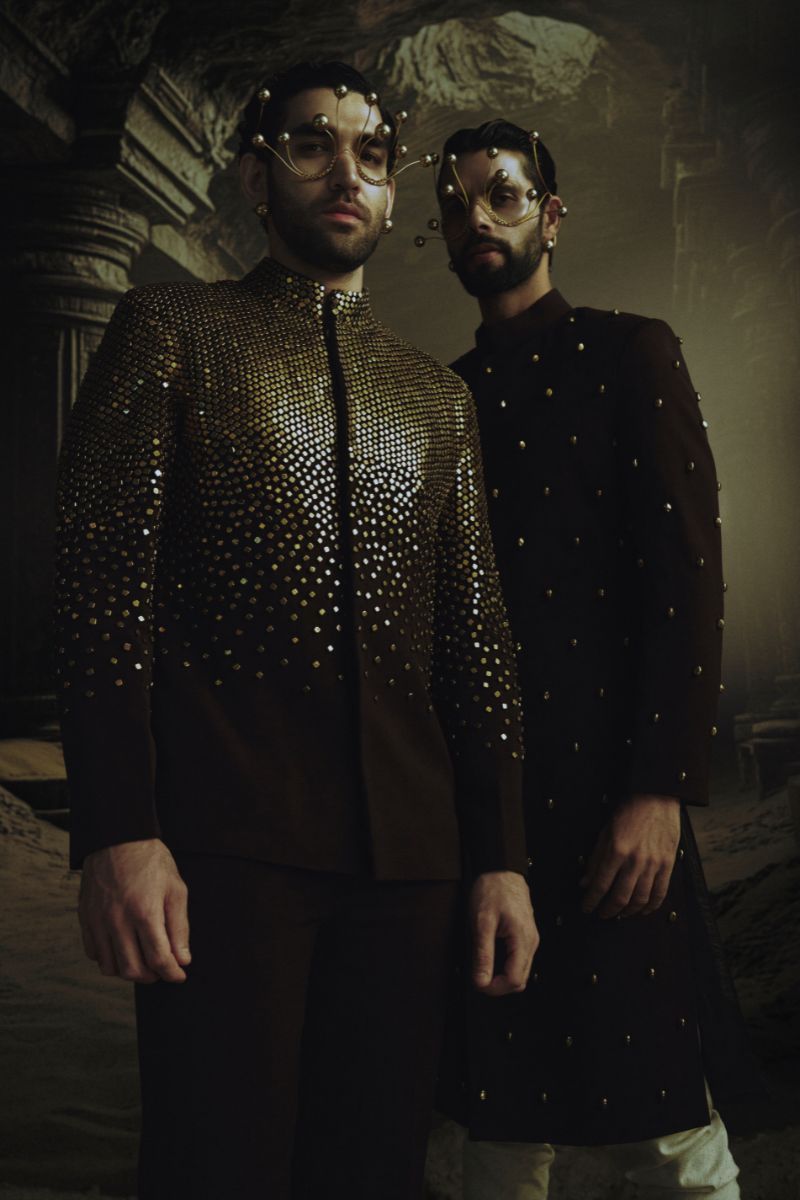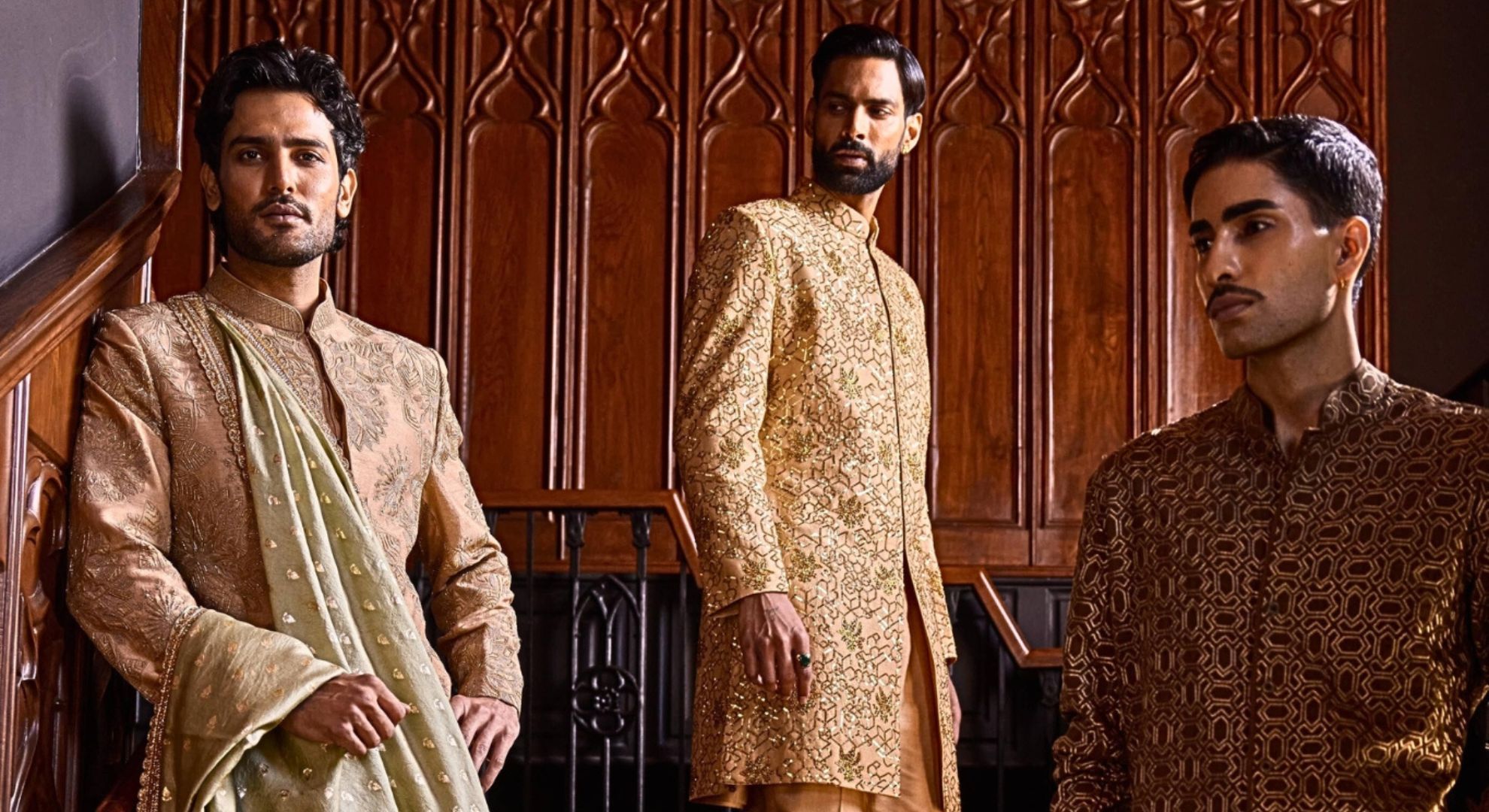Indian weddings are like dollhouses. Move even one tiny piece and the whole thing collapses, at least visually. Now imagine your friend painstakingly planning a pastel-hued, old-money vibe and you show up in the same kurta you have been wearing since college. That “I do what I want” energy has its charm but sometimes fitting in stylishly is its own kind of cool. The question then remains, well, what do you even wear?
We spoke to Indian designers, a celebrity stylist, and a wedding wear brand to decode what works, what fails, and how men can navigate weddings without looking like they belong at a costume party.
The Psychology Of Wedding Dressing
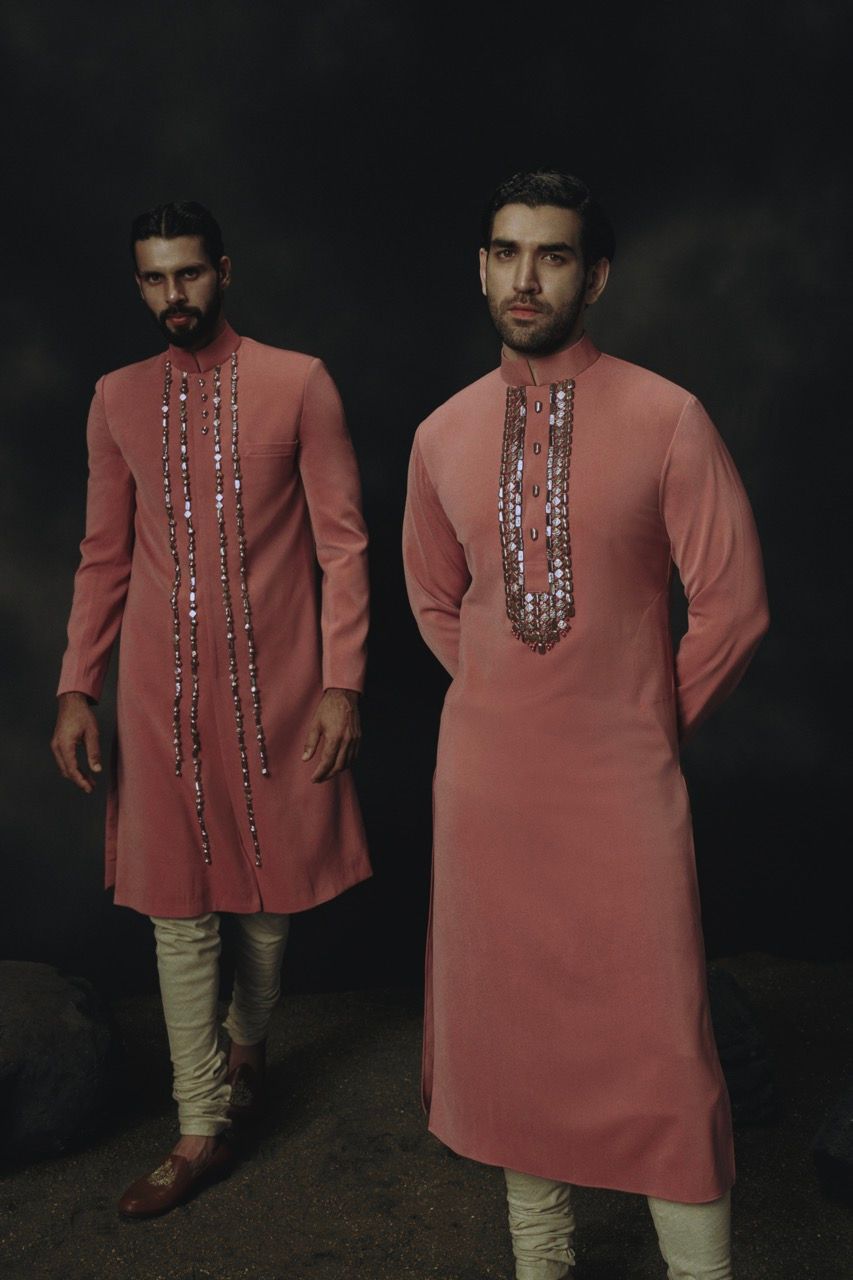
The first challenge is not colour or fabric but mindset. Men often stick to the same kurta or sherwani year after year. Part of it is comfort, part is habit, and part is social anxiety. Weddings are highly performative spaces, and fashion missteps can feel like social missteps. Celebrity stylist Akshay Tyagi explains, “A lot of men try to be too loud or, equally, too safe. Neither works. The key is to be considered rather than conspicuous.”
Standing out in a wedding is as much a social exercise as a style exercise. Men want to be noticed without stealing attention from the groom or bridesmaids. They want to look celebratory without looking ridiculous. The middle ground is subtlety with personality, using cuts, textures, and accessories to signal style intelligence.
Fit Over Flash
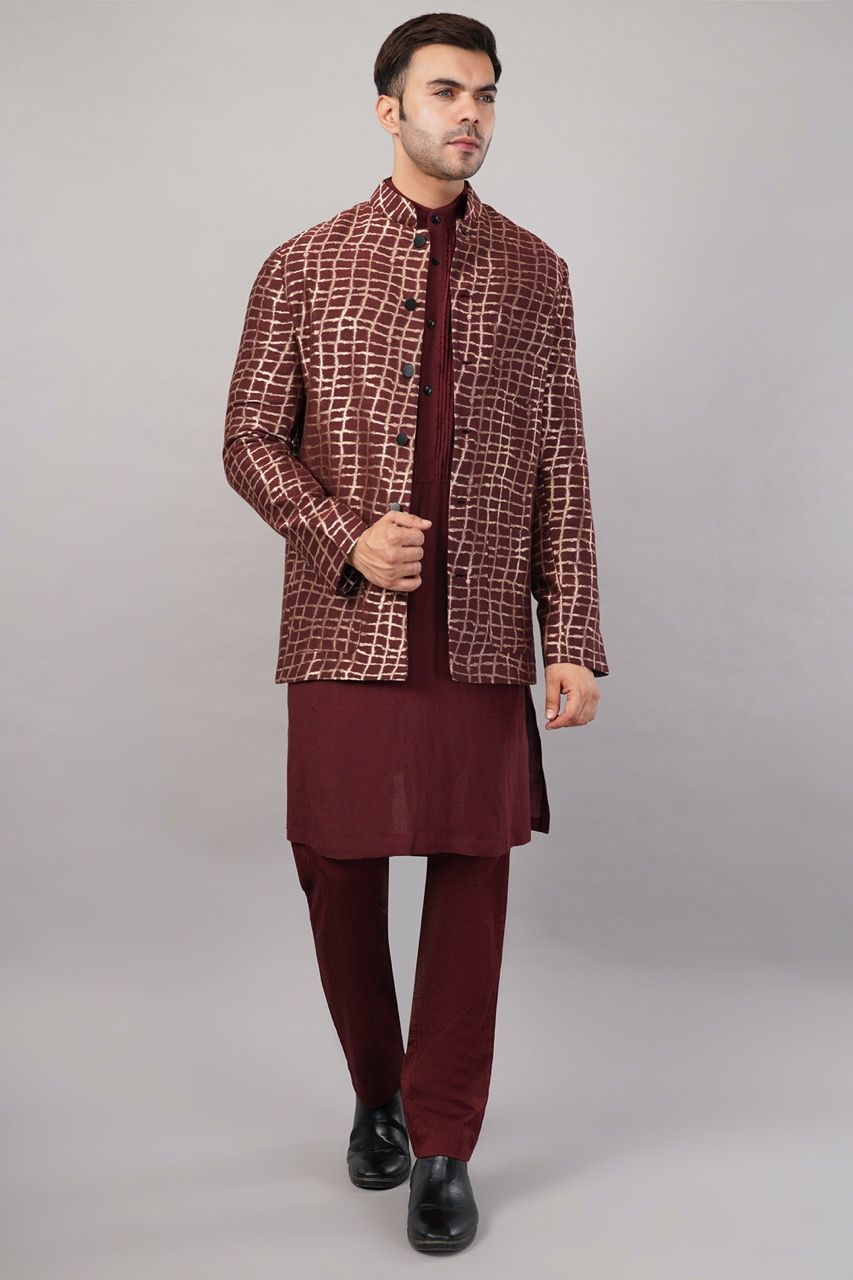
Nothing undermines style faster than poor fit. Indian designer, Nikhil Thampi, puts it bluntly, “Even expensive fabric and embroidery lose their impact if shoulders are oversized or trousers pool at the ankles. Weddings are celebratory, but polish comes from tailoring, not just embellishment.”
Baggy kurtas, sloppy sherwanis, or pants that gather at the floor immediately tell the world that style was an afterthought. Over-accessorising compounds the problem. Abraham and Thakore, the iconic fashion designer duo, explain, “True elegance comes from balance. Wear one strong element and let it speak.” That could be a sharp jacket, a textured stole, or even a statement pocket square. Anything else risks tipping your look into costume territory.
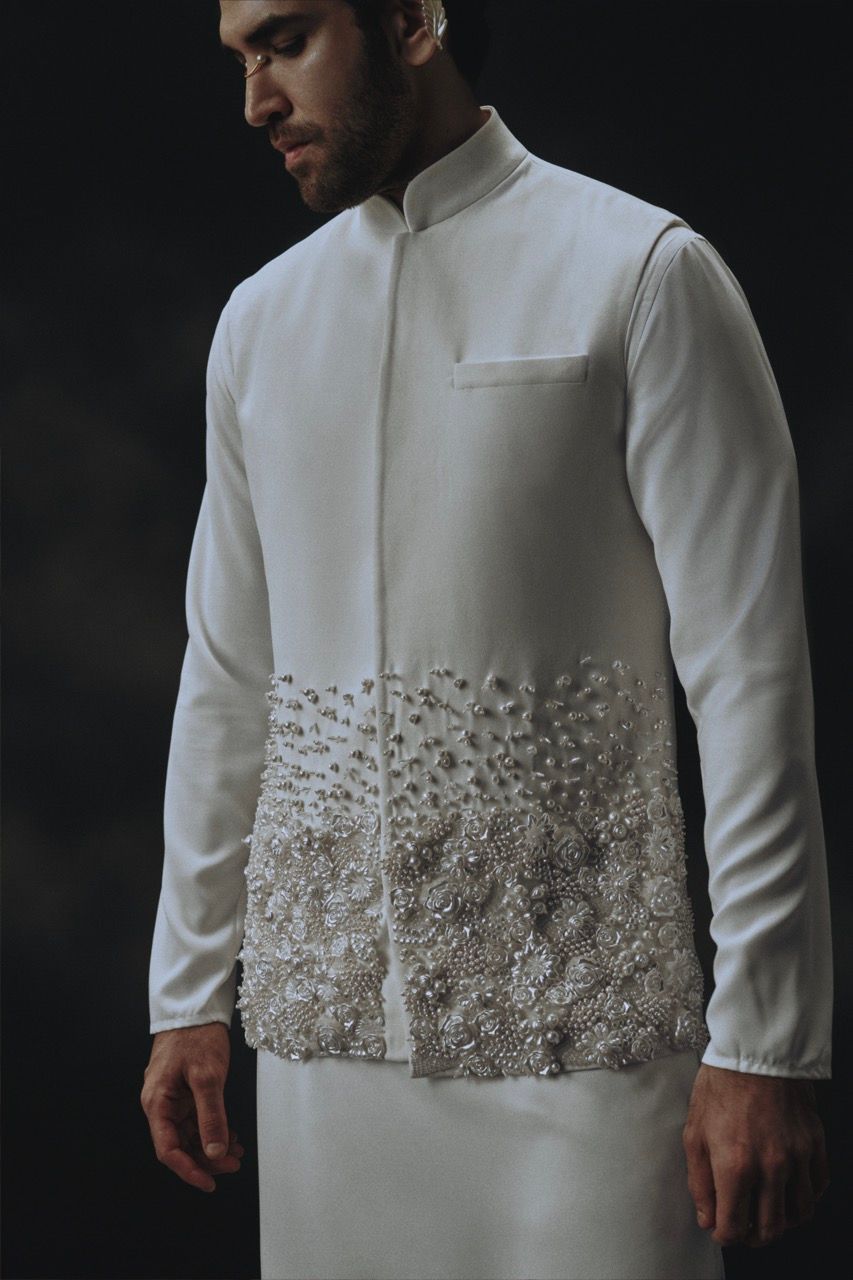
Tyagi adds a note on the subtlety required to avoid being garish. “Men often fear doing too much. The smarter way is minimal, clean, and classic. Tailoring and proportion do more for impact than loud prints or heavy embroidery.”
There is also an overlooked point: how body type informs style. Many Indian wedding outfits are designed as a one-size-fits-most solution. The result is men renting or buying ill-fitting garments. Understanding your shape and choosing cuts that complement it is more transformative than colour or embellishment. Even a simple Nehru jacket can feel regal if the shoulders and waist are tailored correctly.
Fabrics, Colours, And Day-to-night Transitions
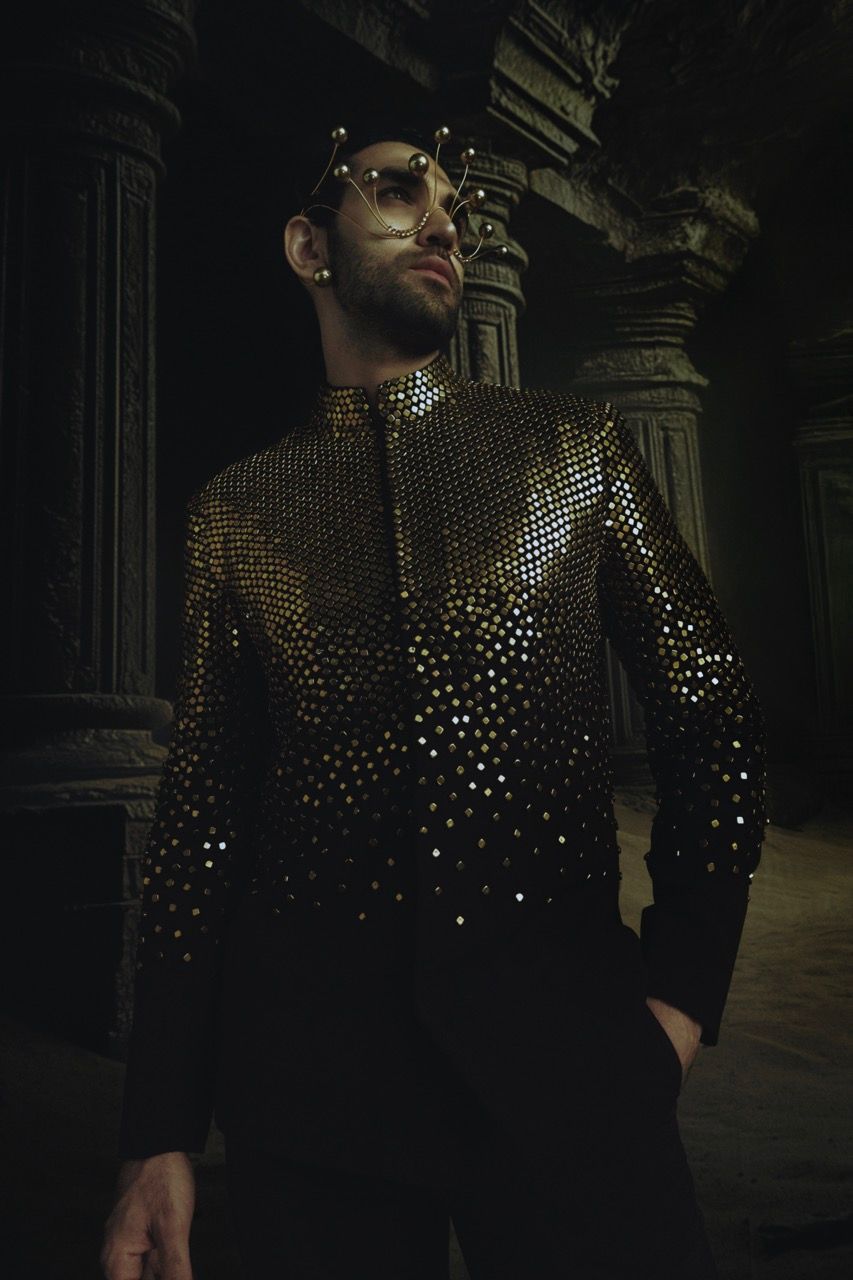
Indian weddings are long and merciless in the heat. Daytime rituals demand fabrics that breathe. Cotton-silk blends, linens, and soft silks in pastel or muted tones keep the look refined and comfortable. Subtle tonal embroidery adds texture without overwhelming the décor or worse, the photographer.
Even small details matter. Tyagi mentions the infamous “polyester stench” that ruins many outfits. Breathable fabrics prevent discomfort and also help in surviving the traditional mix of food, dancing, and relentless sunlight.
As the day transitions to night, fabrics and colours need to graduate to richer tones. Velvet, brocade, and silk in jewel tones or metallic accents elevate the look for evening events. Layering becomes a key tool. A bandhgala, structured jacket, or draped stole can transform a daytime outfit into a night-ready ensemble. Abraham and Thakore call this shift a move from “ease to structure, fluid to sculpted.”
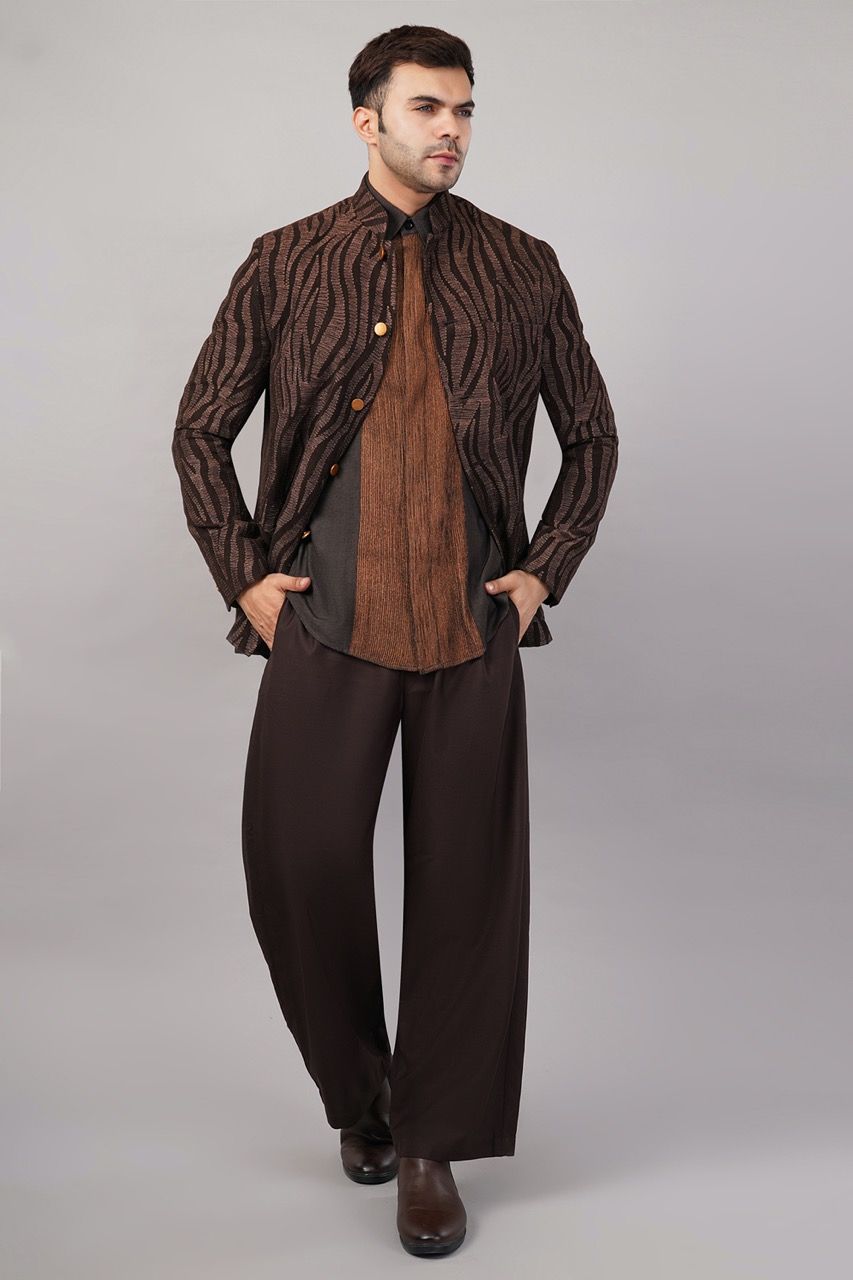
Tyagi emphasizes practicality within these shifts. “Base layers in cotton or linen prevent overheating while silks on top provide polish. Layering also lets you change bottoms, from churidar to trousers, without feeling uncomfortable. Even opening a few buttons or adding a t-shirt underneath can keep the outfit wearable for hours of dancing and rituals.”
Layering is not just practical; it also allows style experimentation. A muted kurta with a textured jacket or a tonal draped stole creates dimension, signaling attention to detail. This makes a guest look thoughtfully dressed rather than randomly thrown together.
Standing Out With Subtlety
Being noticeable does not mean being loud. Clever tweaks in silhouette, texture, and accessories create impact without stealing attention. Abraham and Thakore recommend, “A western jacket over a sharply cut kurta with tailored pants in tonal shades is a creative take on traditional wear. Accessories allow a guest to make an impression without overshadowing the groom.”
Jorah, a luxury Indian menswear brand, adds, “Experiment with offbeat bottoms or subtle embroidery. The goal is formal yet contemporary, with just the right edge. Accessories can elevate a simple ensemble instantly.”
Thampi points out that tonal dressing can be surprisingly impactful. “You can play with multiple shades of ivory or grey. Even small details like a silk pocket square, a vintage brooch, or a lapel pin add personality without screaming for attention.”
Colour psychology is subtle but powerful. Pastels convey a soft, celebratory mood during day rituals. Jewel tones at night signal energy and opulence. Even subtle shifts between shades of the same colour can make a look feel layered and thoughtful.
Footwear That Works
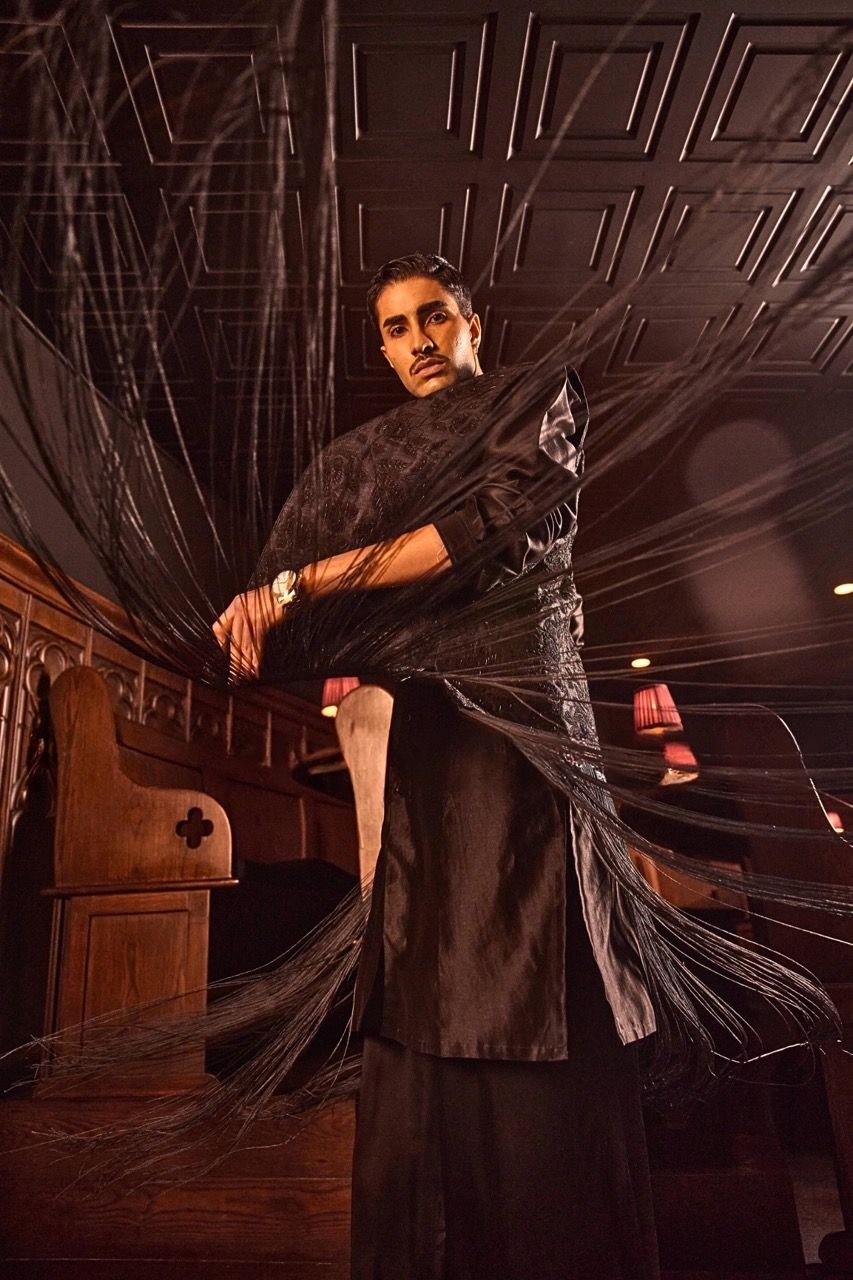
Shoes are where many ensembles collapse. PU shoes, sneakers, or anything that pinches are instant giveaways of poor styling. Footwear must feel like an extension of the outfit. Juttis, mojaris, mules, or kolhapuris are excellent choices. Tassel loafers or double monk straps are perfect for evening ensembles.
Jorah says, “Even the wrong juttis can compromise the entire look.” Tyagi agrees and adds, “Shoes need to be comfortable and clean. Classic slip-ons like Gucci horsebit loafers combine style with a supple fit and a hint of gold that works beautifully with Indianwear.”
For daytime functions like mehendi or haldi, sandals or leather slides can be relaxed yet refined. The key is proportion and comfort, allowing the footwear to support the outfit rather than compete with it.
Minimalist Celebration
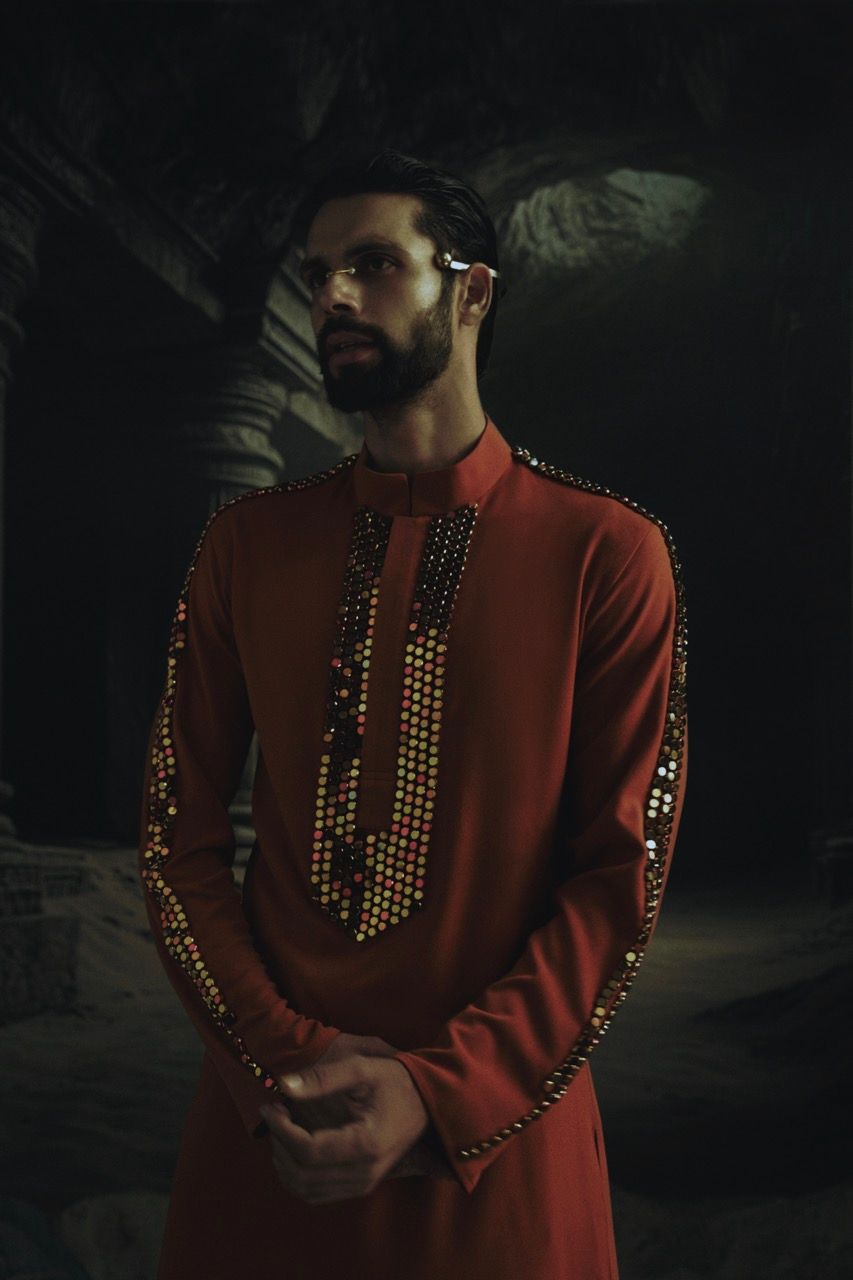
Not all weddings demand sparkle. Tone-on-tone textures, subtle pintucks, or fine brocade can provide elegance. Draped stoles, statement buttons, or refined cuffs create a celebratory vibe without overdoing it.
Thampi explains, “Minimalism does not mean underdressing. Architectural cuts, tone-on-tone embellishments, and draped stoles bring festive flair. Pairing different textures within the same colour family creates a polished, modern look.”
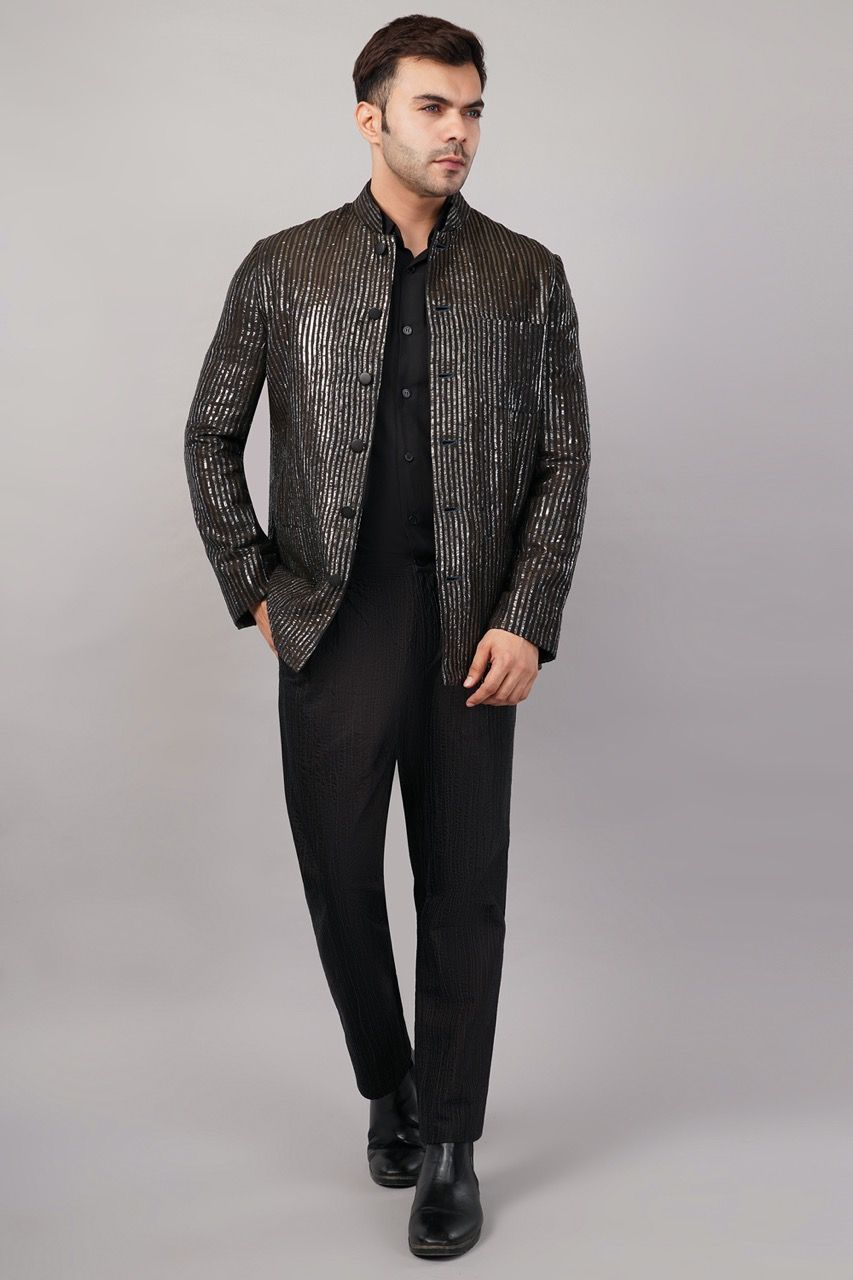
Abraham and Thakore add, “Festivity can come from fabric, texture, or a single accessory. Let one element speak rather than piling everything on.” A well-chosen silk pocket square, a textured lapel pin, or a delicate watch can make all the difference.
Even subtle footwear choices can express minimalism with celebration. A bronze-toned kolhapuri or a lightly embroidered jutti can read festive without screaming for attention.
Practicalities For Long Celebrations
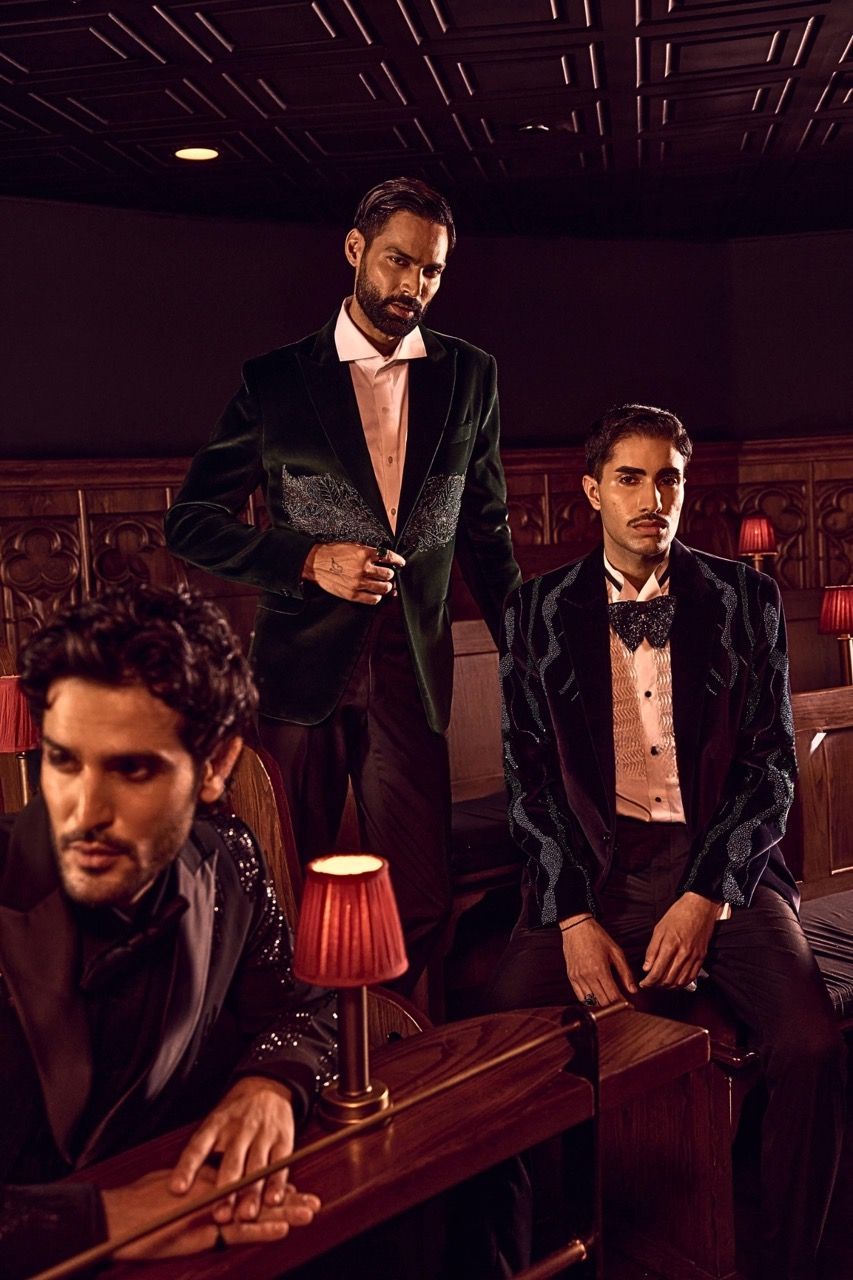
Indian weddings test endurance. Breathable fabrics, flexible layers, and adaptable footwear ensure style does not come at the cost of comfort. Layering and accessories allow men to transition smoothly from morning rituals to evening receptions without feeling over-dressed, under-dressed, or overheated.
“Layering balances comfort and elegance while adapting to changing moods,” Jorah says. Tyagi highlights versatility: “The right fabrics, smart layering, and practical shoes let you survive long celebrations and still look put together at every event.”
The Final Checklist
- Fit first: Tailoring always trumps expensive fabric.
- Layer strategically: Jackets, stoles, and draped elements allow day-to-night versatility.
- Fabrics matter: Cotton-silk and linen for day, silk, velvet, and brocade for evening.
- Shoes count: Loafers, juttis, mules, or kolhapuris. Avoid sneakers and cheap PU shoes.
- Stand out subtly: Silhouette, texture, and tonal shades speak louder than loud prints.
- Accessorise with intention: Pocket squares, lapel pins, watches, scarves, or brooches.
- Comfort is essential: Long celebrations demand breathable fabrics, flexible layers, and wearable shoes.
